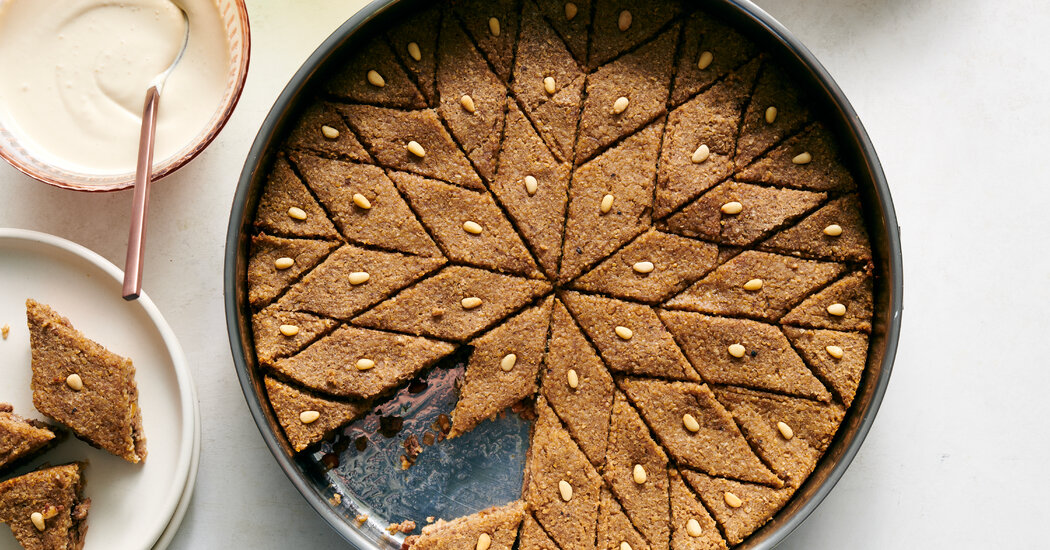
The first time Nermine Mansour hosted Christmas dinner, she was working in Guatemala as a diplomat for the Egyptian foreign service. Five continents and a family later, she has hosted many more Christmas dinners, her table always surrounded by guests from diverse backgrounds and laden with diverse dishes to match.
But two offerings remain a constant: kubbeh, a bulgur- and meat-based shell encasing a lamb and nut filling seasoned with cinnamon and allspice, prepared as a pie or as croquettes; and warak dawali, grape leaves stuffed with a mixture of warmly spiced rice and ground beef cooked in a rich, tangy broth.
These dishes are usually associated with special occasions, Christmas in particular, because of the time required to prepare them and the lavish ingredients they call for. Ms. Mansour, who now lives in Alexandria, Va., is Egyptian American and was raised in the Coptic Christian tradition, in which it is common to abstain from meat and dairy for much of the year, including the 45 days before Christmas.
“Of course, we broke our fasting and celebrated with a plethora of meat dishes,” she said.
Across many Arab Christmas tables outside the Middle East, regardless of sect or fasting traditions, kubbeh and stuffed grape leaves are nonnegotiable. They are also a labor of love, requiring meticulous handiwork and time. As with dumplings or tamales, the dishes are traditionally made en masse, with women gathering to divide the labor.
The task of rolling grape leaves takes on a different meaning when it is done alongside friends and family, explained Antonio Tahhan, a Syrian American food writer, making the task not only bearable, but enjoyable.
5 Holiday Movies to Watch This Season
‘Falling for Christmas.’ This Netflix holiday romance turns to a classic formula: A blue-collar widower strikes up an improbable romance with a stuck-up heiress betrothed to a cocky himbo. The twist? The heiress, played by Lindsay Lohan, comes down with amnesia after a skiing accident.
“I remember I always wanted to be around my mom and aunts while they were rolling grape leaves because it sounded like a party,” he said.
The full splendor of this party is revealed when the pot is flipped over and lifted to showcase lamb chops atop layers of meltingly tender, glistening warak dawali. “These dishes speak to something deeper in our shared culinary heritage, to a communal approach to cooking,” Mr. Tahhan said.
Margot Habiby, a Palestinian American living in Dallas and the deputy director of external affairs at the George W. Bush Presidential Center, said that before food processors, home cooks would pound the meat for the kubbeh in a large stone mortar and pestle.
“That pounding sound signaled a village in celebration,” she said. “If someone from the village suffered a tragedy or death, you would never hear that sound coming from any house.”
The pounded raw kubbeh can be served immediately after preparation, like a tartare. But the possibilities of what one can cook with that kubbeh paste are endless. Football-shaped, deep-fried croquettes might be one of the most recognized forms in the West, because of their prevalence in restaurants and mezze spreads. But they’re also the most labor-intensive, so many Arabs prefer to make a pie form (suniyeh), especially during holidays when time is scarce and convenience is paramount.
“It’s always been suniyeh for us,” Ms. Habiby said. “My parents just didn’t have the patience honestly to make the croquettes.”
For the suniyeh, a layer of bulgur-based dough is pressed into a pan and topped with the meat filling, then another layer of the bulgur dough. The top layer is intricately scored, and finally the pie is baked.
“Until my father died at the age of 94, it was our ritual to make the kubbeh together for Christmas,” said Ms. Habiby, adding, “but the design I was not allowed to touch, so it was a very emotional moment for me the first time I made it by myself.”
For most Arabs in the diaspora, kubbeh and stuffed grape leaves are dishes imbued with meaning as much as flavor. For Ms. Mansour, the former diplomat-turned-food writer and recipe developer, they are not only a thread connecting generations across time and geography, but also a bridge connecting people across cultures.
“I want to create an identity for my kids as Egyptian Copts, so we always have kubbeh and grape leaves alongside other traditional Egyptian dishes for Christmas,” she said. “But it’s also my way to share our heritage with everyone sharing our table.”



